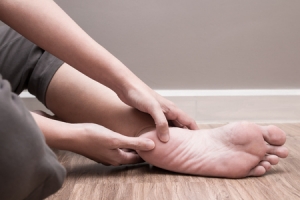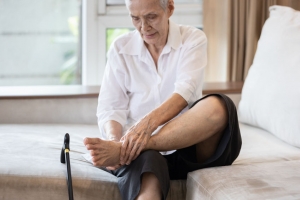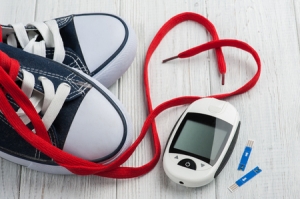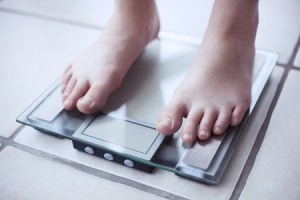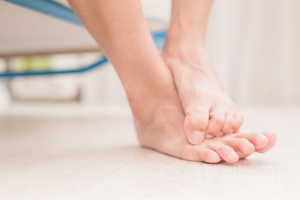Connect With Us
Blog
Displaying items by tag: Diabetes
3 Causes of Back of Heel Pain
At Superior Foot & Ankle Care Center we know that pain at the back of your heel can be quite debilitating. What starts as an annoying ache can quickly turn into excruciating pain that makes walking difficult. For our Los Angeles County patients that may be experiencing these uncomfortable symptoms, here are three possible causes.
Haglund’s Deformity—this is a bony enlargement that forms at the back of your heel. This condition may be the result of an inherited structural issue like a high arch or a tight Achilles tendon. It can also be caused by wearing shoes with stiff backs that rub on the heel—hence this deformity’s other name: pump bump.
Bursitis—small sacs that are filled with fluid—known as bursas—are found throughout the body near joints and bones. They serve as protection from friction and provide a little extra lubrication. When a bursa becomes irritated due to repetitive motion or pressure it can become painfully inflamed. Haglund’s deformity is one cause of bursitis but it may also be the result of repetitive action from exercise or another medical condition such as gout, diabetes or arthritis.
Achilles Tendonitis—this long tendon that runs down the back of your lower leg connects your calf muscle to the heel bone. It can be aggravated or injured from overuse such as someone whose job involves climbing a ladder. Athletes and “weekend warriors” who suddenly increase the intensity of their workout routine may also suffer from Achilles issues.
The only way to find out for sure what’s causing your back of heel pain is to let our podiatrists, Dr. Victoria M. Foley and Dr. Constance Ornelas, examine your foot and conduct the necessary tests to get to the bottom of the problem. You can contact our Long Beach office at (562) 420-9800 office for an appointment. To learn more about foot health and conditions we treat check out our video library.
5 Foot Care Tips for Seniors
Did you know that the average person walks between 2.5 and 5 miles a day? At Superior Foot & Ankle Care Center we know that means our Los Angeles County senior patients have likely put quite a few miles on their feet. In honor of Older Americans Month 2021, we’d like to offer some tips for protecting podiatric health as you age.
- Listen to your feet. Foot pain, shoes that don’t seem to fit properly anymore, and fatigue in your legs or feet are all ways that your feet communicate that something isn’t right. Don’t put off seeking an evaluation of these symptoms. Contact our Long Beach office at (562) 420-9800 to schedule an appointment with our podiatrists, Victoria M. Foley and Dr. Constance Ornelas.
- Keep feet clean and dry. Wash daily with soap and water and dry thoroughly (paying particular attention to the spaces between your toes). If you tend to sweat excessively, keep an extra pair of socks with you and change when you notice your feet feel damp. This will go a long way in preventing fungal infections like athlete’s foot and toenail fungus.
- Check your feet daily. Look over your entire foot (or ask someone to do it for you) for any unusual changes. Toenail or skin discoloration, bumps, bruises and swelling may all indicate a developing foot or even systemic problem. Diseases such as diabetes, hypertension and arthritis often first manifest in the feet.
- Choose shoes wisely. Your footwear is one of the biggest predictors of podiatric health. Look for styles that have good arch support and heel and insole cushioning. Treads should be non-slip but not have rubber over the toes which can lead to tripping. Ask the podiatrist for recommendations of shoe styles if you have a deformity such as a bunion or hammertoe. Lastly, get your feet professionally measured to ensure a proper fit and always try on both shoes before purchasing.
- Reduce fall risk. Falls are the number one cause of both fatal and non-fatal injuries in seniors. Safeguard your home by installing additional stair rails and lighting. Remove throw rugs, plant stands, electrical cords that are across walking areas, and other clutter to lower your chances of falling.
Your podiatrist is your partner in making sure your feet continue to be healthy and enable you to keep on living the active life you love. If you have any questions or concerns, don’t hesitate to contact us.
Holiday Season Do’s and Don’ts for Healthy Feet
Although the radio may be proclaiming “It’s the Most Wonderful Time of the Year,” we at Superior Foot & Ankle Care Center know that the feet of our Los Angeles County patients may not agree. It’s a time of year with lots of extra errands to run, cooking and shopping to do, and being on your feet for longer periods than usual. However, you can sail through the season feeling “merry and bright” if you follow the do’s and don’ts below to keep your feet and ankles healthy and pain-free.
Do: go easy on holiday feasting. Yes, there will be lots of delicious sweets and treats on the menu, but come January extra weight gain could result in added stress and pain for your feet. Many common conditions such as plantar fasciitis, sesamoiditis, and metatarsalgia are all aggravated by carrying additional pounds. If you suffer with diabetes or gout, you need to pay particular attention to what you put on your plate. Go for small quantities of your favorites to savor and compensate by not loading up on unnecessary carbohydrates. Avoid going back for seconds!
Don’t: allow your feet to stay in damp socks. Whether you’ve stepped in a puddle or your feet are sweating during a long day of shopping, it’s essential to not let feet stay where it’s moist. Damp, dark, closed-in spaces (like the insides of your shoes) are the perfect breeding ground for fungal infections. Pack an extra pair of socks and change into them when you notice feet feel sweaty. Use foot powder before you put on socks.
Do: carefully consider footwear choices. When you know you’re going to be on your feet for several hours or doing an above-average amount of walking, make sure the styles you choose are comfortable and have good arch support and non-stick treads. Limit the amount of time in high-heeled party shoes!
Do: leave extra time in your schedule for making appointments. Rushing is when you’re most likely to not see an object in your path which can cause an ankle sprain or other injury.
Don’t: put off getting foot pain evaluated by our podiatrists, Dr. Victoria M. Foley and Dr. Constance Ornelas. This can result in a podiatric problem getting worse and potentially requiring longer and more invasive treatments. Make an appointment at our Long Beach office by calling: (562) 420-9800 today.
8 Ways to Protect Your Feet if You Have Diabetes
November is American Diabetes Month and at Superior Foot & Ankle Care Center this is a topic of high importance. Diabetes has the potential to seriously impact the health of your feet. When blood sugar levels are high, your immune system can be compromised, and your body may have difficulty fighting infections. Two other conditions associated with diabetes—poor circulation and peripheral neuropathy (loss of feeling) — can conspire to put your feet at risk for dangerous wounds and infections. Diabetes can also affect your bones, joints, and skin. This year’s message from the American Diabetes Association, however, is one of hope: “We Stand Greater Than Diabetes.” The good news is that there are many ways to prevent podiatric problems if you have diabetes. Below are eight to consider:
- Schedule regular podiatric exams. Our podiatrists, Victoria M. Foley and Dr. Constance Ornelas, are an important part of your health care team if you have diabetes. Seeking care regularly will help the foot doctor spot problems before they get out of control and help you be proactive in protecting your feet.
- Check your feet daily. Getting in the habit of examining your feet—top, bottom, between the toes and toenails—will enable you to spot any changes promptly. Cuts that aren’t healing, redness, swelling, bruising, growths, or changes in skin color or nails may all be signs that something potentially harmful is developing. Any changes should be reported promptly to our Long Beach office by calling: (562) 420-9800.
- Choose your shoes carefully. Avoid stiff shoes and look for styles that have roomy toe boxes. Get your feet measured and fitted professionally and periodically run your hand around the inside of the shoes to make sure there are no rough seams or material that could cause friction and blisters.
- Don’t smoke. It impedes circulation.
- Keep feet dry. Sitting in damp footwear can increase your risk of athlete’s foot and fungal toenails.
- Don’t go barefoot. Even at home, wear slippers or shoes to prevent cuts and puncture wounds.
- Do not use medicated pads, acid solutions, or sticky pads. For warts, corns, and calluses consult your podiatrist for treatment and don’t attempt any “bathroom surgeries.”
- Follow your doctor’s instructions for managing your diabetes. Take your medications as directed, eat a nutritious diet, maintain a healthy weight, and exercise regularly.
Poor Circulation Can Cause Big Foot Problems
At Superior Foot & Ankle Care Center, we find that patients may not accurately understand the seriousness of decreased circulation to the lower extremities. The medical condition known as peripheral arterial disease (PAD) describes a situation where plaque (fatty deposits or cholesterol) have adhered to the walls of the arteries that lead to your legs and feet causing a partial or total blockage. This restricts the blood flow to the lower half of your body. PAD is often associated with diabetes and a significant cause of some of the more serious complications of the disease. When oxygen and nutrient-rich blood cannot get to your legs and feet in significant quantities, it makes it difficult to heal wounds and ulcers. This can lead to infection and, in extreme cases, amputation.
Recognize the Symptoms
There is a variety of symptoms of PAD that you may observe or experience. These include:
- Pain or cramping in your feet, legs, thighs or buttocks
- Feeling of coldness in your legs
- Hair loss on your toes and legs
- Bluish or reddish tinge to the skin on your feet or under the toenails
- Thickening and discoloration of your toenails
- Ulcers or wounds on your feet that have not healed after 8-12 weeks
If you notice any of these signs, you should contact our Long Beach office for an appointment by calling: (562) 420-9800. Our podiatrists, Dr. Victoria M. Foley or Dr. Constance Ornelas will want to examine your feet. There are a number of simple, non-invasive tests the foot doctor can perform to see if your symptoms point to PAD.
Reducing Your Risk
In addition to diabetes, PAD is also more common in patients who have high blood pressure, high cholesterol, heart disease or who have suffered a stroke. You are also at a higher risk for developing PAD if you are over the age of 50 or have a family history of PAD, heart disease or stroke. The good news, however, is that some risk factors for PAD are within your control to control. These include:
- Smoking
- Sedentary lifestyle
- Obesity
Making healthy lifestyle choices now and partnering with your podiatrist to monitor your foot health can help you prevent PAD or slow its progression. If you have additional questions about PAD, contact us at our Long Beach office in Douglas Park CA.
6 Tips for Protecting Your Feet with Diabetes
At Superior Foot & Ankle Care Center, we know that diabetes can affect your skin, joints, and bones in a number of ways. Two conditions associated with the disease—peripheral arterial disease (PAD) and neuropathy—are of particular concern when it comes to your lower extremities. PAD is a narrowing or blocking of the arteries to your legs, which can lead to poor circulation. This means that nutrient and oxygen-rich blood necessary for healing cannot reach your legs, feet, and toes as quickly as needed. Neuropathy is nerve damage that can result in loss of feeling in your feet, which makes it difficult to perceive pain and injury. This double whammy means that patients with diabetes are at a higher risk for a host of podiatric problems, including:
- Ulcers and wounds that do not heal properly
- Fungal infections
- Hammertoes
- Ingrown toenails
- Corns and calluses
Difficulty healing can cause even minor foot and toe problems to become major threats with the potential for infection and even amputation. Below are some ways you can be proactive in preventing foot problems if you have diabetes:
- Control your blood sugar. Follow all your doctor’s instructions for managing your diabetes. Watch your diet, take your medications as directed and regularly test to make sure you are on track.
- Schedule regular podiatric checkups. Our podiatrists, Victoria M. Foley or Dr. Constance Ornelas, will work with you to prevent potentially dangerous foot issues. Seeing the foot doctor regularly will increase the chances of catching injuries and infections in their very early and most treatable stages. The podiatrist can also help with nail care, wound debridement and diabetic footwear and orthotics.
- Keep feet clean, warm, and dry. Wash daily and dry thoroughly—especially between your toes. Use a foot powder before putting on socks.
- Make sure shoes fit correctly. Avoid styles that have narrow toe boxes are that are made of very stiff materials. Keep the heel height to 2 inches or less.
- Don’t walk barefoot. This dramatically increases your chances of getting athlete’s foot or a fungal toenail infection, which are contracted by direct contact. You are also more likely to step on a sharp object and injure your foot without shoes.
- Conduct regular self-exams—it’s important that between appointments you are checking your feet and toes daily for any signs of rashes, cuts, blisters, bruises, growths or other indicators that a foot problem is developing. If you can’t see your whole foot as a family member or caregiver to assist you. Contact our Long Beach office immediately by calling (562) 420-9800 if you find anything concerning.
Losing Weight: Your Feet Will Thank You
It’s a sad fact that 74% of overweight Americans have foot problems. So, while you may wonder what the connection is, at Superior Foot & Ankle Care Center, we know there is a direct correlation between being overweight or obese and the health of your feet. It’s easy to see when you stop and think about it: your feet are carrying the weight of your entire body—the more you weigh the more stress and hard work for your feet. Below are three benefits for your feet to losing weight:
- Less foot pain—excess weight puts strain on your tendons and joints and can cause a flattening of the arch of your foot. This can increase your risk or the severity of several foot conditions, including:
- Plantar fasciitis
- Tendonitis
- Arthritis
- Sesamoiditis
- Gout
Changes and discomfort in your feet can also lead to problems with your back, hips and knees. If you are experiencing pain in any part of your foot, it’s essential that you make an appointment at our Long Beach office by calling: (562) 420-9800 so that our podiatrists, Dr. Victoria M. Foley or Dr. Constance Ornelas can examine your feet and determine the source of your foot problem.
- Prevention of diseases—maintaining a healthy weight can also help lower your risk of certain medical conditions such as diabetes, hypertension and peripheral arterial disease. These systemic diseases can have devastating affects on your feet like neuropathy and circulation problems.
- Greater mobility—the less you weigh, the easier it is to be active. Being active can help in losing and maintaining a proper weight. A regular exercise routine will also help keep foot joints flexible and preserve a full range of motion.
The good news is that it doesn’t require a huge drop in weight to see big results for your feet. For example, for every pound you lose, this reduces the pressure on your knees by up to four pounds. If you are concerned that your weight may be affecting the condition of your feet, contact us today for more information.
Good Eats to Help Your Feet
In March, we celebrate National Nutrition Month. At Superior Foot & Ankle Care Center we believe that good nutrition has many positive benefits for your podiatric health. What’s the connection between what you eat and your feet? Read on.
Maintain a Healthy Weight—one of the most obvious benefits to eating healthy is getting to and then maintaining a healthy weight. Being overweight increases the risk and severity of many foot health problems, including:
- Arthritis
- Plantar fasciitis
- Flat feet
- Sesamoiditis
Many patients may not realize when it comes to your lower extremities, the pressure of excess pounds can be dramatic. For example, every pound you gain or lose exacts 4 times the amount of pressure on your knees.
Stay Active—in addition to the fact that it’s easier to be active when you’re not overweight, the foods you eat can also impact your energy level. Avoiding processed foods and those high in saturated and trans fats and sugars and focusing on lean protein and complex carbohydrates can increase your energy level and help you be more active.
Get the Nutrients You Need—good nutrition is about eating a varied diet. Enjoying a rainbow of produce, both fruits and vegetables will ensure that your body gets all of the many nutrients it needs. Certain fruits and vegetables like blueberries and red peppers can help fight inflammation, a common source of pain in podiatric disorders. Making choices that ensure you get the calcium you need from dairy products, leafy greens, and certain fishes will build strong bones—something that’s important to your feet since over a quarter of all the bones in your body can be found there.
Avoid Diseases that Harm Your Feet—your diet can lower your risk for certain diseases like diabetes, heart disease, and high blood pressure. Each of these conditions causes problems that can harm your feet such as poor circulation and neuropathy.
If you have questions about ways that your diet can improve the health of your feet, contact our Long Beach office by calling: (562) 420-9800. Our podiatrists, Dr. Victoria Foley, and Dr. Constance Ornelas. We want to help our patients be proactive about their health and take the necessary steps to lead active lives.
5 Foot Symptoms and What They Mean
At Superior Foot & Ankle Care Center, we urge all of our patients to inspect their feet regularly and report any unusual changes to our podiatrists, Dr. Victoria Foley or Dr. Constance Ornelas. Sometimes, however, we find out that patients put off making an appointment at our Long Beach office because the change they’ve noticed just doesn’t seem that serious. Small changes can mean big foot problems, and your feet can also act an “early warning system” for diseases that can affect your whole body. Below are some changes in your feet and what they may mean:
- Red skin. Although short-term redness of the feet could just be due to temperature change or an allergic reaction to your laundry detergent, consistent redness can mean something more serious. Infections, such as athlete’s foot, can start with redness of the skin and an itchy rash. Consistently red or inflamed feet can also be a sign of the autoimmune disease of lupus.
- Black toenail. Unless you’ve recently stubbed your toe or you’re a runner, a black or discolored toenail is characteristic of a fungal infection. These may not be painful initially but will continue to progress and are contagious if not treated.
- There are several diseases which can cause excess fluid buildup (also called edema) in your legs and feet. These include: kidney or liver failure, heart disease and diabetes. If you are pregnant, a certain amount of swelling is normal but if in the last trimester of your pregnancy you experience sudden or excessive swelling, it may be a sign of a preeclampsia, a serious condition that requires immediate treatment.
- Cold feet. If your feet are always cold, regardless of the season or temperature, it can be an indicator of poor circulation. There are several possible causes for this, including diabetes, anemia and an underactive thyroid.
- Everyone gets a foot cramp occasionally, but if you are getting them regularly, it’s something to get checked out. In some cases, it may simply be a case of dehydration or a lack of certain minerals in your diet like magnesium, potassium or calcium. On the other end of the spectrum, however, ongoing foot cramps can be an indicator of nerve damage.
If you notice anything different about your feet or ankles—even if the changes are not painful or dramatic—contact us as soon as possible at: (562) 420-9800.
Focus on Diabetic Foot Care
At Superior Foot & Ankle Care Center we treat many patients with diabetes. November is American Diabetes Month and a good opportunity for us to go over some care tactics for patients with this disease. Below are some key areas to focus on:
Your Daily Care Routine
Of course, a good foot care regimen is important for everyone, but for a diabetic patient, it is even more critical. Your daily care plan should include:
- Washing your feet with warm water and a mild soap
- Drying your feet completely, with extra care to ensure that the area between your toes is completely dry (this will help prevent fungal infections)
- Checking toenails for jagged edges. Always trim nails straight across with no rounded edges. Do not cut too short and never cut the corners.
- Inspect your feet from every angle. Look for changes in skin and nail color, rashes, flaking skin, bruises, swelling, any scratches or cuts. Report anything that concerns you to our podiatrists, Dr. Victoria Foley and Dr. Constance Omelas to evaluate. It’s always better to be over cautious!
Your Shoes and Socks
Shoes should have wide, roomy toe boxes and be made of soft, flexible materials. Avoid heels higher than 2 inches. When buying new shoes, have your foot professionally measured. Run your hand around the inside of the shoe to make sure there are no rough spots or loose stitching. Wear new shoes for only a few hours at a time and examine your feet after wearing to make sure there are no red spots or blisters forming.
Socks should be the type that wick moisture away from your feet. If you sweat excessively, change your socks multiple times throughout the day. Avoid socks that have overly tight elastic on the tops and those with seams across the toes.
Your Lifestyle Choices
Eating an appropriate diet to help manage your blood sugar is essential. A regular exercise routine will help you maintain a good weight and also improve circulation. Don’t smoke because it has a negative impact on circulation. Follow all of your doctor’s recommendations for keeping your diabetes under control.
If you have questions or concerns about diabetes and your feet, contact our Long Beach office today by calling: (562) 420-9800.
Archives
Categories
- Featured (163)
- Blog (176)
- Ankle Care (6)
- Ankle Condition (2)
- Ankle Pain (0)
- Appointment Tips (2)
- Arch Pain (1)
- Arthritis (10)
- Athlete's Foot (6)
- Blister (1)
- Bunions (7)
- Calluses (1)
- Child Care (2)
- Circulation (1)
- Common Foot Conditions (4)
- Common Foot Problems (3)
- Corns (0)
- Custom Orthotics (1)
- Diabetes (10)
- Diabetic Foot Care (3)
- Diabetic Footwear (1)
- Edema (1)
- Exercise (4)
- Fall Prevention (1)
- Fitness (1)
- Flat Feet (2)
- Foot Care (19)
- Foot Care Safety Tips (3)
- Foot Care Tips (20)
- Foot Conditions (12)
- Foot Facts (3)
- Foot Health (6)
- Foot Odor (1)
- Foot Pain (5)
- Foot Problems (2)
- Foot Safety (1)
- Foot Surgery Tips (2)
- Foot Warts (2)
- Foot Wear (2)
- Fractures (1)
- Fungal Infection (2)
- General Health (0)
- Gout (5)
- Gout Treatment (0)
- Hammertoe (1)
- Health Tips (46)
- Heart Health (1)
- Heel Pain (0)
- Heel Spurs (0)
- Ingrown Toenails (4)
- Interesting Facts (2)
- Joint Pain (2)
- Leg Conditions (2)
- Leg Condtions (0)
- Men's Foot Health (1)
- Metatarsals (0)
- Nail Fungus (2)
- Neuropathy (1)
- Nutrition (2)
- Obesity (2)
- Osteoporosis (1)
- Pain Relief (5)
- Patient Communications (1)
- Pediatric Foot Conditions (5)
- Pediatric Foot Pain (2)
- Pedicure (1)
- Peripheral Arterial Disease (1)
- Plantar Fasciitis (2)
- Podiatrist Appointment (0)
- Pregnancy Feet (3)
- Proper Shoes (2)
- Senior Foot Care (7)
- Shoe Fit (1)
- Skin Cancer (3)
- Sports Injuries (2)
- Spring Foot Health (1)
- Summer Foot Health (2)
- Toe Pain (4)
- Uncategorized (5)
- Varicose Veins (2)
- Walking (1)
- Women Foot Health (3)
- Youth Sports (2)
